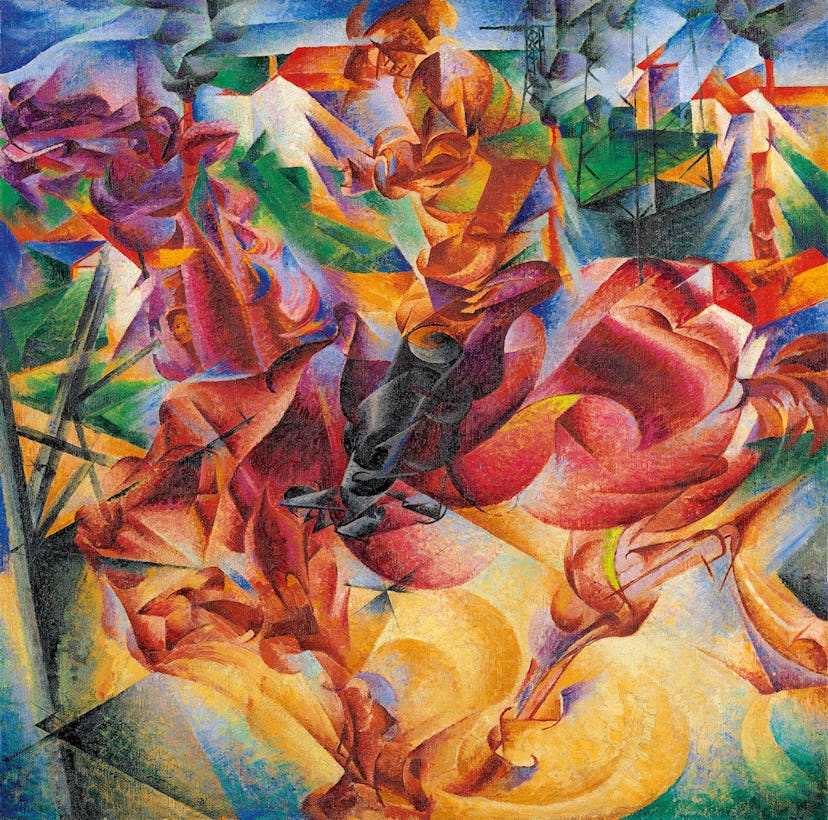Rage for the Machine

The Italian Futurists saw themselves as soldiers of speed and mechanics, fighting in the name of progress. F.T. Marinetti’s 1909 Futurist Manifesto was their declaration of war: “We want to demolish museums,” Marinetti wrote. But the Guggenheim Museum in New York still stands, and on February 21, it debuts ”Italian Futurism, 1909–1944: Reconstructing the Universe.” On view through September 1, the exhibition showcases more than 300 works spanning three decades and a gamut of disciplines. “The movement celebrated innovation and would have embraced this new era of instant communications,” says the show’s curator, Vivien Greene. Whether Marinetti—who, in his manifesto also noted, “What is the use of looking behind?”—would have embraced the idea of a retrospective is another matter.
Photos: Rage for the Machine
Umberto Boccioni’s Elasticity, 1912. Photograph courtesy of Museo del Novecento and the Guggenheim Museum.
Futurismo 2, no. 32 with art by Mino Somenzi and Pino Masnata, 1933. Photograph courtesy of Fonds Alberto Satoris, Archives de la Construction Moderne-Ecole polytechnique federale de Lausanne, and the Guggenheim Museum.
Gerado Dottori’s Cimino Home Dining Room Set, 1930. Photograph courtesy of Daniele Paparelli, Achivi Gerardo Dottori, and the Guggenheim Museum.
Francesco Cangiullo’s Large Crowd in the Piazza del Popolo, 1914. Photograph courtesy of the Guggenheim Museum and the Artist Rights Society.
Umberto Boccioni’s Unique Forms of Continuity in Space, 1913. Photograph courtesy of The Metropolitan Museum of Art and the Guggenheim Museum.
Filippo Masoero’s Descending over Saint Peter, 1930-1933. Photograph courtesy of Touring Club Italiano Archive and the Guggenheim Museum.
Bruno Munari and Torido Mazzotti’s Antipasti Service (6 plates, 1 vase), 1929-1930. Photograph courtesy of The Wolfsonian-Florida International University, The Mitchell Wolfson, Jr. Collection, and the Guggenheim Museum.